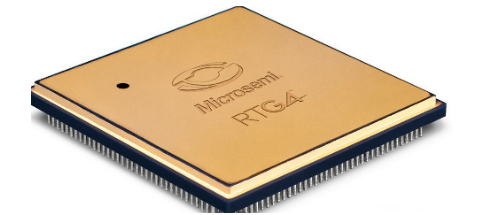Microsemi offers radiation-tolerant FPGAs for high-speed signal processing applications
Microsemi Corporation announced that it can provide RTG4TM, a radiation-tolerant FPGA product for high-speed signal processing applications, using reprogrammable flash technology to provide fully immune to radiation-induced configuration flipping in the most demanding radiation environments. Features, no need to reconfigure (configuraTIon scrubbing), which is different from SRAM-based FPGAs. The RTG4 provides up to 150K logic cells and up to 300 MHz system performance for space-grade product applications.

Typical applications for RTG4 include remote sensing of space loads such as radar, civilian imaging and spectroscopy, scientific and commercial applications. These applications cover weather forecasting, climate research, land use, astronomy and astrophysics, planetary exploration, and earth science. Other applications include mobile satellite service (MSS) communications satellites, as well as high-altitude flight, medical electronics and civilian nuclear power control. Such applications have used expensive anti-radiation ASIC devices in the past, forcing development projects to incur significant cost and schedule risks. RTG4 devices provide FPGA-specific ease of use and flexibility without sacrificing reliability or performance.
Marco Cáceres, senior analyst and director of space research at Teal Group in Virginia, said: "We expect the number of new spacecraft of 50 kilograms or more to increase by about 25% over the next 10 years, with Compared to previous spacecraft, these new spacecraft will feature more complex payload electronics and more onboard data processing to maximize data acquisition while addressing limited downstream bandwidth."
RTG4 FPGAs have the flexibility, reliability, and performance to easily achieve this goal. Microsemi has long been committed to the development of radiation-tolerant FPGA devices, its FPGA devices are widely used in NASA and international space projects, and RTG4 devices are the latest research results of Microsemi.
David Strobel, CEO of Space Micro, Inc., San Diego, Calif., said: "Our next-generation software-defined radio and image processing computers are designed for several NASA and international space science missions, and we are happy to use Microsemi's on these devices. RTG4 FPGA devices. We believe that the high performance and rich feature set of RTG4 FPGAs combined with our proprietary advanced processing algorithms will constitute a successful combination that creates superior value for our space and missile customers."
Ken O'Neill, director of aerospace marketing at Microsemi, said: "The introduction of the RTG4 FPGA device confirms our firm commitment to the space industry as a leading supplier of FPGA devices, greatly reducing the impact of radiation effects. RTG4 FPGAs combine the rich features, highest quality and reliability to meet the growing demand for modern satellite payload equipment."
Key product features include:
• Up to 150,000 logic cells, each consisting of a four-input lookup table (LUT4) and a trigger with built-in protection against single event flip (SEU) and single transient events (SET)
• System performance up to 300 MHz
• 24 high speed serial transceivers. Operating speeds from 1 Gb/sec to 3.125 Gb/sec
• 16 SpaceWire clock and data recovery circuits with SEU and SET protection
• 462 multiply-accumulate math modules with SEU and SET protection
• Overboard MRAM with more than 5 Mbits with SEU protection
• Single Event Blocking (SEL) and Configuration Memory Flip Immunity
• Total ionization dose (TID) exceeds 100 Krad
This article is from Allicdata Electronics Limited.

